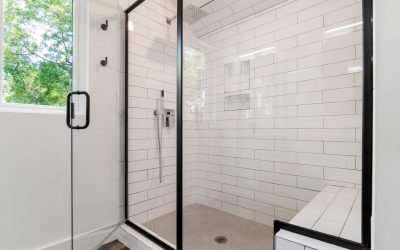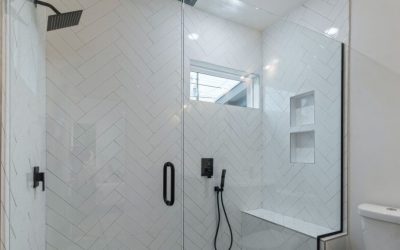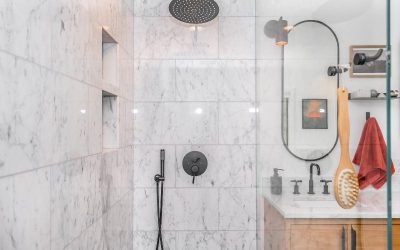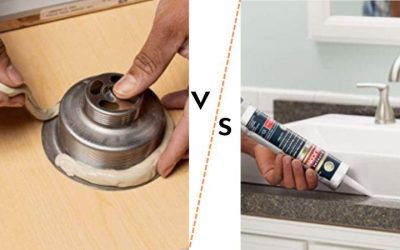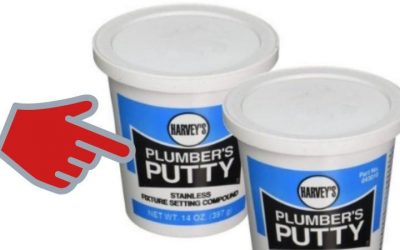If you’re considering using wood paneling in your bathroom, you may be wondering if it’s a good idea. After all, wood is typically associated with cozy living rooms and rustic kitchens.
But there’s no reason why wood paneling can’t work in a bathroom. In fact, it can add a unique touch to the room, especially when paired with the right accessories.
In this article, we look at a few things to keep in mind if you’re thinking about using wood in your bathroom walls.
Is wood paneling suitable for bathrooms?
Yes, wood paneling is suitable for bathrooms. It can add a feeling of warmth to the room and can be used to create a variety of different looks.
However, there are several factors that should be considered before paneling a bathroom with wood walls. These include;
1. Moisture and humidity levels in the bathroom
The most important factor is moisture. Bathrooms tend to be humid, which can cause the wood to warp, shrink, or rot.
Humidity can affect wood paneling in a bathroom in a few different ways.
Too much humidity can cause the wood to swell and warp, while too little humidity can cause the wood to shrink and crack.
In addition, changes in humidity can also cause the paint or finish on the wood paneling to peel or flake off.
2. The type of wood paneling
There are a lot of different types of wood paneling to choose from, but you need to choose one that is moisture resistant.
Oak and cedar are moisture resistant so they do not easily absorb moisture or warp when exposed to moist conditions. Also, they also add a natural and rustic look to the bathroom.
If you want a more polished, formal look, then something like mahogany or cherry would be better.
Pine is also a popular choice, but it’s not as resistant to moisture as oak or cedar.
Nonetheless, you can use any hardwood for paneling as long as it is properly sealed and maintained. If it’s not properly sealed or maintained, it can warp or rot.
3. Temperature and light
Temperature and light can both affect wood paneling in the bathroom.
So, wood paneling should not be installed near windows or doorways, as it will be exposed to more sunlight and heat than other parts of the room.
Temperature can cause the wood to expand or contract, which could lead to the panels becoming loose or even falling off the wall. It’s important to make sure that the temperature in the bathroom is never too hot or too cold.
Light can also affect wood paneling in the bathroom. Over time, exposure to sunlight can cause the wood to fade, become brittle and crack over time. Thus, it’s important to make sure that any exposed wood panels are covered with a UV-resistant finish if you want them to last longer.
4. How well the panels are sealed
As stated earlier, you should make sure that your wood paneling in the bathroom is properly sealed to protect it from moisture.
You can do this by applying a clear sealant, varnish, or stain-blocking sealant to the paneling. Just be sure to follow the manufacturer’s instructions for the best results.
Is bathroom wood paneling waterproof?
There’s no one definitive answer to this question because it depends on the type of wood paneling, the sealant or coating used on it, and how well it was installed.
In general, though, most types of wood paneling are not waterproof. They should not be exposed to moisture unless treated with a good quality sealant.
However, there are some types of wood paneling that are designed to be more water-resistant, so it’s important to check with the manufacturer before making a purchase.
How do you protect wood paneling in bathroom?
There are a few things you can do to protect wooden paneling in your bathroom, especially from moisture damage:
– Use a humidifier: This will help to regulate the level of humidity in the air and prevent the wood from absorbing too much moisture.
-Seal the paneling: A good sealant will create a barrier between the wood and moisture, preventing it from seeping in and causing damage.
-Wipe up any water spills immediately: This will help to avoid any long-term damage from moisture that could penetrate the wood.
– Try to avoid putting any hot items directly on the paneling.
– If possible, install a fan in your bathroom to help keep the air circulating and prevent moisture buildup.
Can you make wood paneling waterproof?
Yes, you can make wood paneling waterproof.
You can either buy a waterproof sealant or varnish or use a polyurethane sealant to coat the panels.
Also, you can make your own mixture of beeswax and linseed oil.
Apply the waterproof sealant or varnish to the wood paneling with a brush, working in small sections. Allow the sealant or varnish to dry completely before continuing.
See also: Common shower niche problems
What sealant can you use for bathroom wood panels?
There are a few different types of sealant that you can use on bathroom wood panels, depending on the material of the panel and the finish you want.
If you’re looking for a clear sealant, polyurethane or lacquer are good options.
For a more natural look, beeswax or tung oil can be applied to the wood.
When choosing a sealant, make sure to read the labels carefully to ensure it is compatible with bathroom conditions (i.e. high humidity).
What type of paneling can I use in the bathroom apart from wood?
There are a few different types of paneling that you can use in the bathroom apart from wood.
- One option is metal panels: Metal panels are durable and moisture-resistant, so they are a good option for bathrooms.
- Another option is to use plastic panels. Plastic panels are also moisture-resistant and durable, and they come in a variety of colors and designs so you can find one that will match your bathroom decor.
- Finally, you could also use tile panels. Tile panels are made with real tiles, so they are both durable and stylish. Plus, they come in a variety of colors and designs so you can find one that will match your bathroom decor.
Related article: FRP Panels for shower walls
Conclusion
So, the answer to our question is yes; you can use wood paneling in a bathroom.
But there are a few things you should keep in mind. First of all, make sure that your bathroom is properly ventilated, as moisture and humidity can cause problems for wood paneling.
You’ll also want to choose a type of wood paneling that is resistant to water and humidity.
And finally, be sure to seal the panels with a waterproof sealant periodically to protect them from moisture damage.
By following these tips, you can enjoy the beauty and elegance of wood paneling in your bathroom without having to worry about any potential problems.


